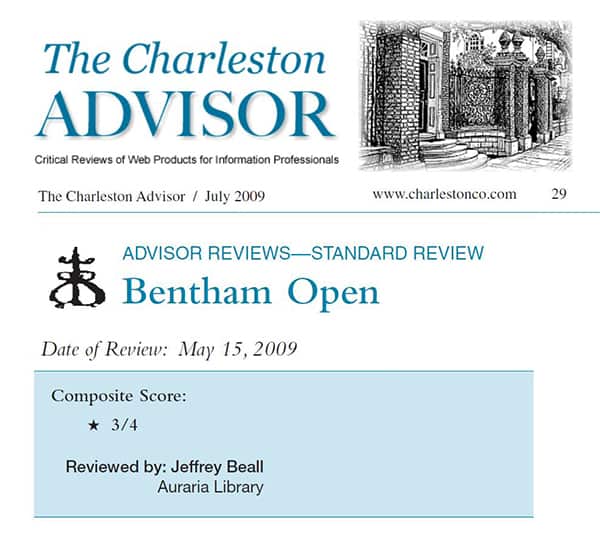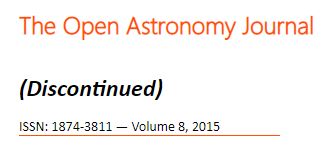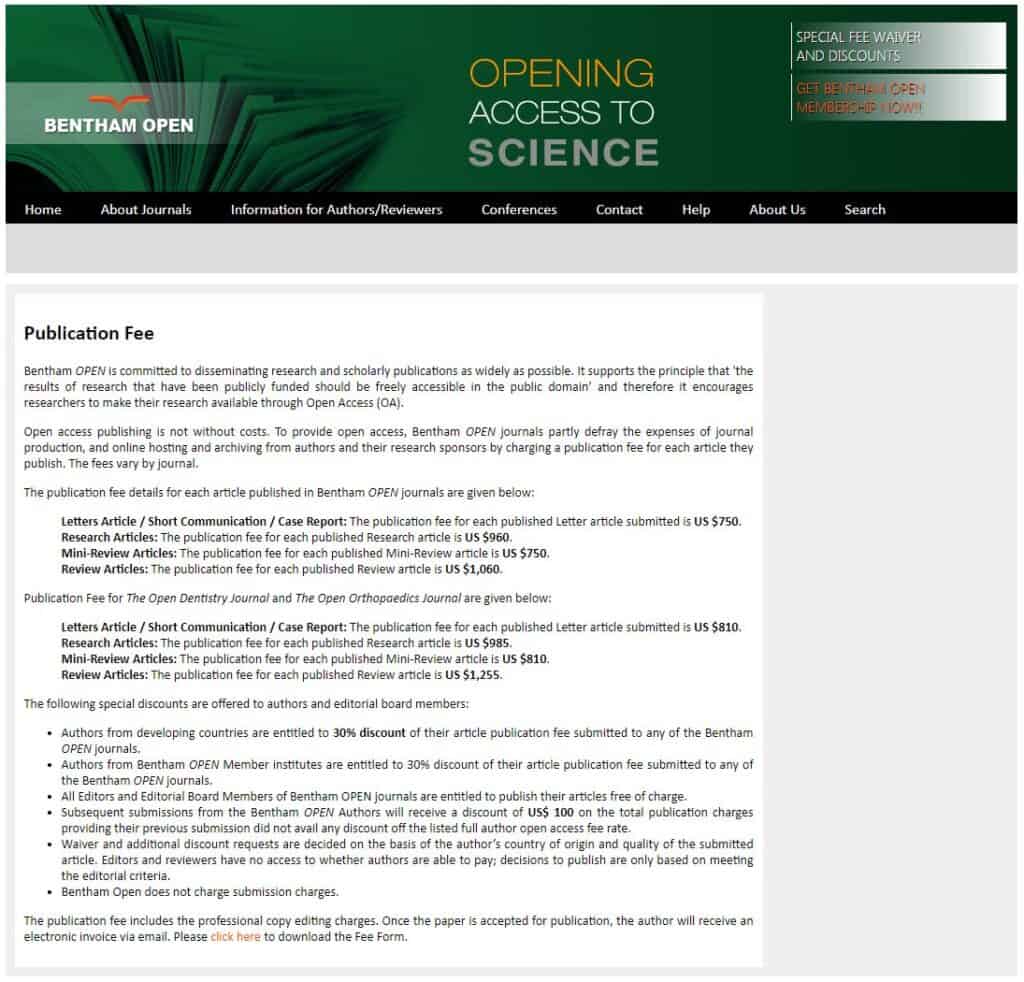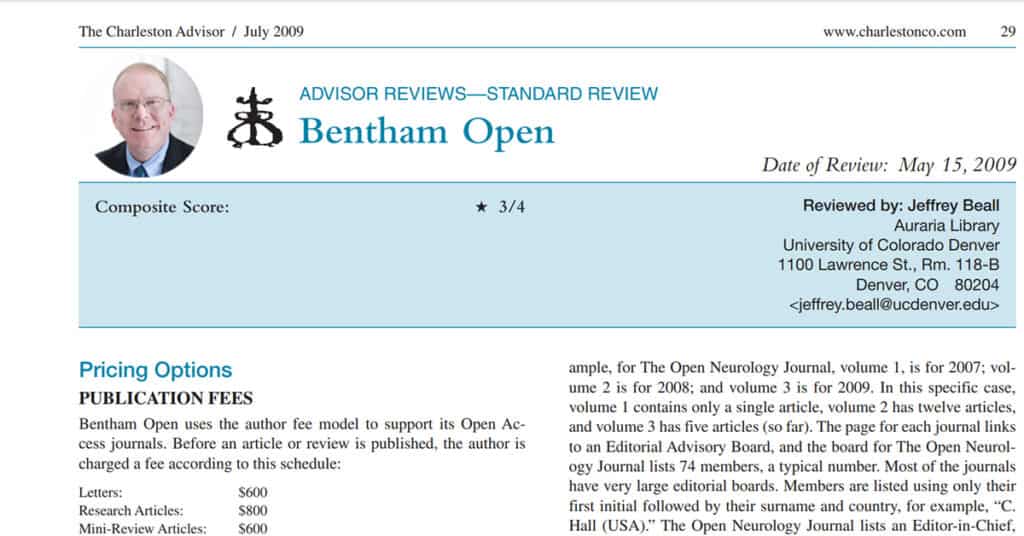In this article we put a spotlight on:
Beall, J. 2009. Bentham Open. The Charleston Advisor 11(1) 29-32
In 2009, Jeffery Beall published his first paper that addressed predatory publishing, although he did not use that term until his next paper in 2010. In his first paper, he analyzed the publisher Bentham Open which, at the time, published 236 journals. Beall concluded that Bentham Open was exploiting the Open Access Model for its own financial motives.
These posts highlights one particular paper from the scientific archive that addresses predatory publishing. If you have any papers that discusses predatory publishing, that you would like us to put a spotlight on, please let us know.
Background
Jeffrey Beall is probably most well known for “Beall’s List“, which was a list of publishers and journals that he considered predatory. He started his first blog in 2010, moving it to a WordPress blog in 2012 called “Scholarly Open Access“, which was commonly called “Beall’s List“. The list was suddenly taken down in 2017.
In addition to maintaining Beall’s List, Jeffrey Beall was also an author of peer reviewed papers that addressed predatory publishing. He also wrote papers on other topics, but we are, of course, primarily interested in his papers on predatory publishing.
Discussion
The paper highlighted here was the first paper that Beall wrote on predatory publishing, although he did not use the term in that first paper. This was done in his next paper in 2010; a term which has remained in common use ever since.
This first paper analyzed one particular publisher (Benthan Open). Some of the points raised by Beall are discussed below.
Article Processing Charges (APCs)
The APCs ranged from $450 (for a book review) to $900 for a review article. A research article would attract an APC of $800.

There was an option to become a member, with both individual and institutional memberships being available. The benefit of being a member is that you receive a discount on the APC. As an example, if you paid an individual membership fee of $1,600 you would receive a discount of 5% of the publication fees. An individual membership fee of $4,800 would provide a 25% off the APC.
Beall commented on the membership plan:
“The membership plan that Bentham Open Access offers is highly questionable, especially the individual membership. The cheapest individual membership is $1,600, and at this rate an author receives a 5% discount on author fees. For an article that costs $800 to publish, the discount is $40; to break even at that membership level, an author would need to publish 40 articles. Clearly, very little thought has been put into Bentham’s membership plan; it appears only to be a way to generate revenue for the company from the naive.“
For institutional memberships the fee for a 5% discount is $2,200, rising to $11,000 for a 25% discount. These discounts would apply to all those affiliated with the institution.
There was nothing on the web site about discounts from developing countries but, in response to an email, Bentham Open said that a 30%-50% discount would be given to those authors.
Number of journals
When Beall analyzed Bentham Open, the publisher had 236 journals in its portfolio., covering Science, Technology and Medicine. He notes that most of the journals started in 2007 and 2008. He pointed out that most of the journal titles started with “Open” (or “The Open”), resulting in names such as “The Open Business Journal“, but also led to some awkward titles such as “Open Heart Failure Journal“.
Search Functionality
The web site, at the time of the analysis, was not very rich with regard to its search options, with Beall suggesting that users might be better using Google and Google Scholar to search for a particular paper published by Bentham Open, although not all content was available in Google.
Critical Evaluation
This section of the paper is, arguably, the most interesting; at least at the time of writing, as it would be informative to those scholars who were thinking of submitting to the journal.
Beall points out that the paper has published unpopular views on topics that would probably be unacceptable in mainstream journals. He provides an example of Dark Fluid Models paper that was published in “The Open Astronomy Journal“. Beall argues that as this topic is not accepted by mainstream cosmologists, it would be rejected by other journals. Beall argues that the authors may have submitted it to a Bentham Open journal because it would be subject to less rigorous peer review or, the knew that simply by paying the fee he would be able to publish the paper.
Scores
Beall, in this paper and some of his future papers. gave scores to the journal based on four criteria (Content, Searchability, Price and Contract). For the first three criteria, he awarded one star (out of five) and for Contract, he awarded four stars. This results in a composite score of 1.75. His comments on the first three criteria were quite scathing. For example, for Content, he says “The site has over 200 online, Open Access journals, but many have only a few articles in them. Many articles are of questionable quality and likely not publishable in mainstream journals.“
Beall's conclusion
In the final part of the article, Beall states:
“Bentham Open’s emergence into scholarly publishing in 2007 has served mainly as a venue to publish research of questionable quality. The site has exploited the Open Access model for its own financial motives and flooded scholarly communication with a flurry of low quality and questionable research. By linking to sites such as Bentham Open, libraries are diluting scholarly research and making it more difficult for scholars to sort through the abundance of journal articles available.“
We do not think there is any ambiguity as to whether Beall believed that this journal was predatory, even though the term had not entered the scientific literature at the time this article was published.
Final Thoughts
The idea of these overview of papers related to predatory publishing is primarily designed just to highlight the paper, and its contents, to those who might be interested. We do not wish to comment on the paper itself, as we do not feel that is our place.
However, as we wrote this post, we made a few notes which we expand on below.
Still publishing?
Bentham Open is still publishing. and looking at its web site (10 Sep 2020) it now publishes 43 journals, a significant reduction from the 236 it was publishing when Beall reported it in his 2009 paper.
The Open Astronomy Journal
The Open Astronomy Journal, which was mentioned in Beall’s article, is no longer published. It was published between 2008 (Volume 1) to 2015 (Volume 8), publishing a total of 89 papers, with 28 of those papers appearing in four special issue which were part of Volumes 3 and 4 (two special issues each).

COPE and DOAJ
We did look a a sample of journals that Bentham Open now publishes and we could not find any that are members of COPE (Committee on Publication Ethics) or DOAJ (Directory of Open Access Journals). This is not, in itself, a bad thing but it does raise a red flag that would warrant further investigation.
Article Processing Charges
Just so that we have a historic point of reference, we looked at Bentham Open’s APCs (accessed 11 Sep 2020), just to note their charges now.
You can see the APCs by expanding the image to the right. They range from $750 for a letter to $1,060 for a review article.
Two of their journals ( The Open Dentistry Journal and The Open Orthopaedics Journal) charge slightly higher fees; $810 for a letter and $1,255 for a review article.
There are discounts of 30% for those from developing countries, editors and editorial board members can publish for free and those that have published before are entitled to $100 discount.
It is good to see that the publication fee includes professional copy editing charges. Although it does not say what that includes, it should still be welcomed.

Conclusion
The paper we are looking at was published in 2009. At that time, Bentham Open was publishing 236 journals. In 2020, 11 years on, this number has reduced to 43.
We have not looked at the publisher in the same way that Beall did, so we offer no opinion whether Bentham Open can now be considered a legitimate open access journal or is still predatory.
We would flag the fact that it does not appear to have engaged with either DOAJ or COPE as a factor that authors might like to consider when look at the journal.


